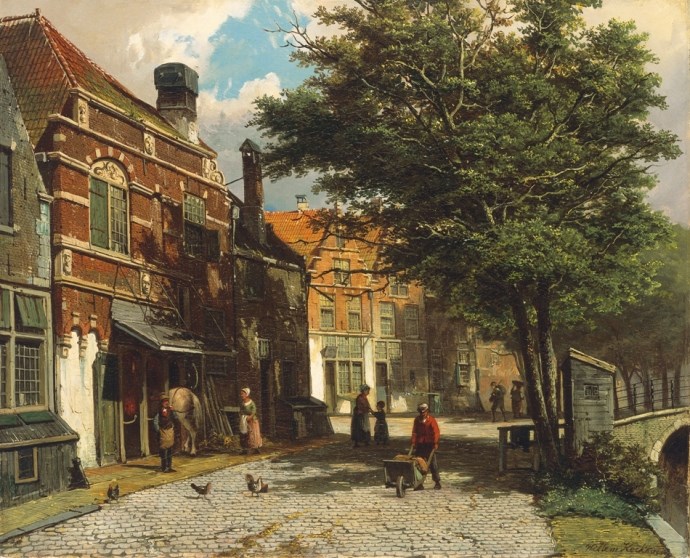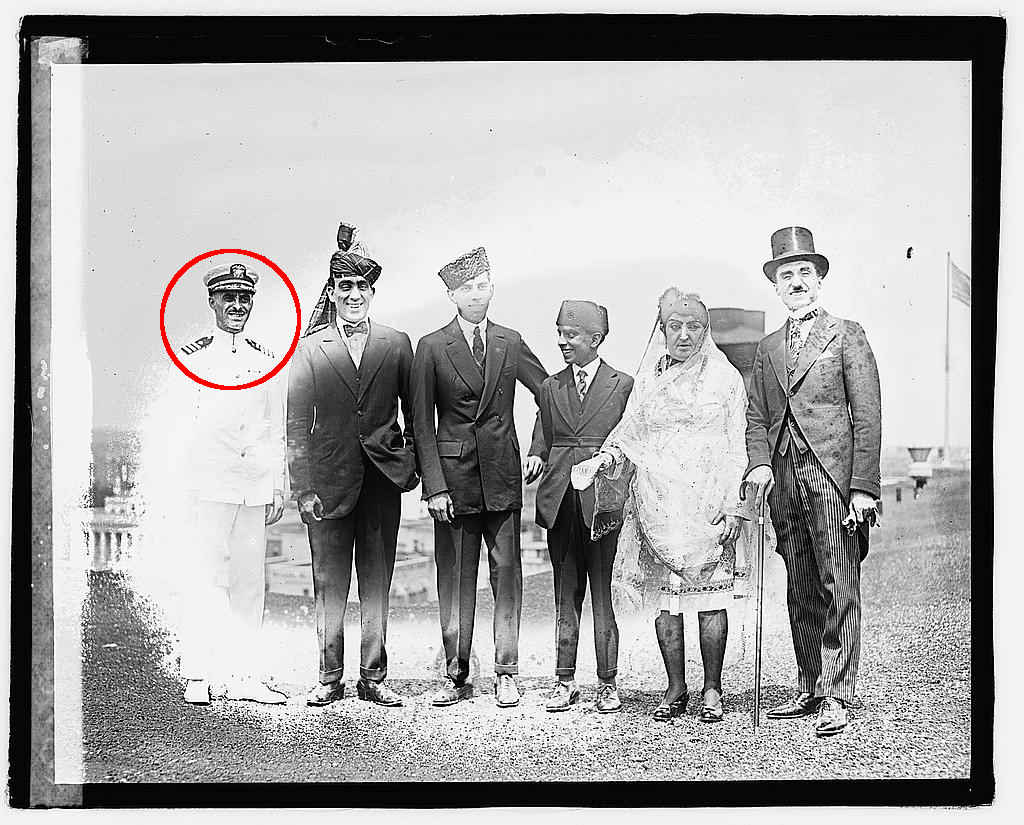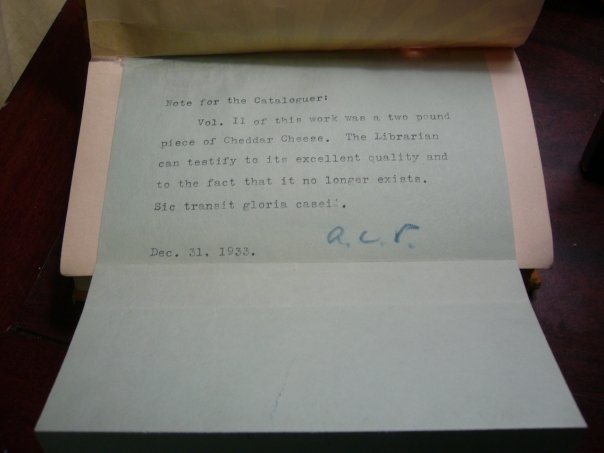Is it possible to pack six 1 × 2 × 2 blocks and three 1 × 1 × 1 blocks into a 3 × 3 × 3 box?
Author: Greg Ross
Presto

Raymond Smullyan offered this proof at a conference on self-reference:
A: Santa Claus exists, if I am not mistaken.
B: Well, of course Santa Claus exists if you are not mistaken!
A: So I was right.
B: Yes.
A: So I was not mistaken.
B: Yes.
A: Hence, Santa Claus exists.
Character Study
Balzac’s 1829 treatise La physiologie du mariage contains a strange passage:

“Four editions of the book, three of them printed in Balzac’s lifetime, in fact contain four different versions,” notes F.L. Bauer in Decrypted Secrets. “The author must have been playing a practical joke on the reader. Nevertheless, [French military cryptanalyst Étienne] Bazeries investigated such a cryptogram in 1901 and found that it did not fit any known scheme; it was une facétie de l’auteur.”
Paean
Proctologist W.C. Bornemeier explains why the sphincter ani must be preserved when performing hemorrhoid surgery:
They say man has succeeded where the animals fail because of the clever use of his hands, yet when compared to the hands, the sphincter ani is far superior. If you place into your cupped hands a mixture of fluid, solid and gas and then through an opening at the bottom, try to let only the gas escape, you will fail. Yet the sphincter ani can do it. The sphincter apparently can differentiate between solid, fluid and gas. It apparently can tell whether its owner is alone or with someone, whether standing up or sitting down, whether its owner has his pants on or off. No other muscle in the body is such a protector of the dignity of man, yet so ready to come to his relief. A muscle like this is worth protecting.
— W.C. Bornemeier, “Sphincter Protecting Hemorrhoidectomy,” American Journal of Proctology 11 (1960), 48-52
Cross Purposes

A perplexing problem from the Pi Mu Epsilon Journal, Spring 1983:
In the little hamlet of Abacinia, the people use two base systems.
One resident says, “26 people use my base, base 10, and only 22 people speak base 14.”
Another says, “Of the 25 residents, 13 are bilingual and 1 is illiterate.”
All the residents speak the truth, but each (naturally) expresses numbers in her own base. How many residents are there?
In a Word

oppugn
v. to attack or oppose with words
dyslogistic
adj. expressing disapprobation
digladiation
n. verbal contention
Joseph Pulitzer, of the New York World, who is referred to by Mr. Mencken as a great master of profanity in three languages, is credited with the intensified term ‘Don’t be so indegoddampendent.’ Certainly the phrase was common parlance on Park Row in my own repertorial days. Mr. Mencken adds the retort of managing editor Coates to that charge, ‘I’m under no obligoddamgation to do that and I won’t!’
— Burges Johnson, The Lost Art of Profanity, 1948
Podcast Episode 110: The Brooklyn Chameleon

Over the span of half a century, Brooklyn impostor Stanley Clifford Weyman impersonated everyone from a Navy admiral to a sanitation expert. When caught, he would admit his deception, serve his jail time, and then take up a new identity. In this week’s episode of the Futility Closet podcast, we’ll review Weyman’s surprisingly successful career and describe some of his more audacious undertakings.
We’ll also puzzle over why the police would arrest an unremarkable bus passenger.
The Chromatic Illusion
This illusion was discovered by University of California psychologist Diana Deutsch. Listen first with the left and right channels in balance, then isolate each ear. Though the pattern in each channel jumps around in pitch, when they’re combined we tend to hear two smooth scales. Why?
“It is as though the sounds gravitate towards neighbours, where ‘neighbourhood’ is defined not by the physical proximity of the causative events, but by adjacent places on the pitch spectrum,” writes philosopher Roger Scruton. “Yet the sequences as heard are played into neither ear, and represent no causally unified process in the physical world. The auditory Gestalt is not merely incongruous with the physical events that produce it. It is organized according to principles that are intrinsic to the world of sounds, and which would be operative even if there were no physical events that could be identified as the causes of the individual sounds.”
(Roger Scruton, “Thoughts on Rhythm,” in Kathleen Stock, ed., Philosophers on Music, 2007.)
Wire Bonds
The San Diego Daily Union of April 25, 1876, records a wedding by telegraph. W.H. Storey was the U.S. Signal Service operator at Camp Grant, Ariz. He couldn’t get leave to travel to San Diego, where Clara Choate lived, and there was no minister within hundreds of miles of the camp, so it appeared that the wedding couldn’t take place. But Storey thought, “A contract by telegraph is binding; then why can we not be married by telegraph?”
They were. Clara traveled to Camp Grant, and the pair were married over the wire by Jonathan L. Mann, pastor of the Methodist Episcopal church of San Diego. Lt. Philip Reade invited all managers along the line between California and Arizona to be present at their stations as wedding guests.
At 8:30 p.m. the father of the bride sent this message from San Diego:
Greeting to our friends at Camp Grant. We are ready to proceed with the ceremony.
D. CHOATE AND PARTY.
The answer came back:
We are ready.
W.H. STOREY.
CLARA E. CHOATE.
Then the Rev. Mr. Mann read the marriage service, which was repeated to Camp Grant as uttered, word for word, by Mr. Blythe, chief operator at the San Diego office. At the proper moment, the solemn ‘I do’ came back over the wires signed first by ‘William H. Storey,’ then by ‘Clara E. Choate.’ Then, following the words of the minister, the instruments clicked.
‘As a token of your sincerity you will please join your right hands.’
The answer came promptly: ‘It is done.’
The service was then concluded in regular form, after which congratulatory messages were sent the bride and groom from all stations. Suddenly Chief Operator Blythe of San Diego broke in and telegraphed Mr. Storey that ‘the Silver Cornet band of San Diego is just outside the office, giving you and your bride a serenade,’ a welcome that was warmly appreciated even though it was not heard at Camp Grant, 650 miles away.
Mr. and Mrs. Storey are still living in San Diego and have a happy family of five bright children who will always find pleasure in telling the story of their parents’ romantic wedding.
Eating Words
Reader Colin Brown sent this in: In the Harvard Libraries in 2008 he checked out a history of Tillamook County, Oregon, and of cheesemaking in particular, issued in the 1930s by the Oregon Journal. There were two volumes: Volume One was a book titled Cheese Cheddar, and in place of Volume Two he found a note taped to the inside cover:
Note for the Cataloguer:
Vol. II of this work was a two pound piece of Cheddar Cheese. The Librarian can attest to its excellent quality and to the fact that it no longer exists. Sic transit gloria caseii.
A.C.R.
Dec. 31, 1933
“The book was noted as a personal gift of Charles H. Taylor, Jr., but it was unclear whose initials those were on the added sheet,” Colin writes. “When I checked the book out in 2008, it had only been checked out one other time since its donation (in 1944).”
He adds, “I informed the library and they have archived it in their protected section of the Widener Depository for unusual addenda or marginal notes.”



(Thanks, Colin.)

